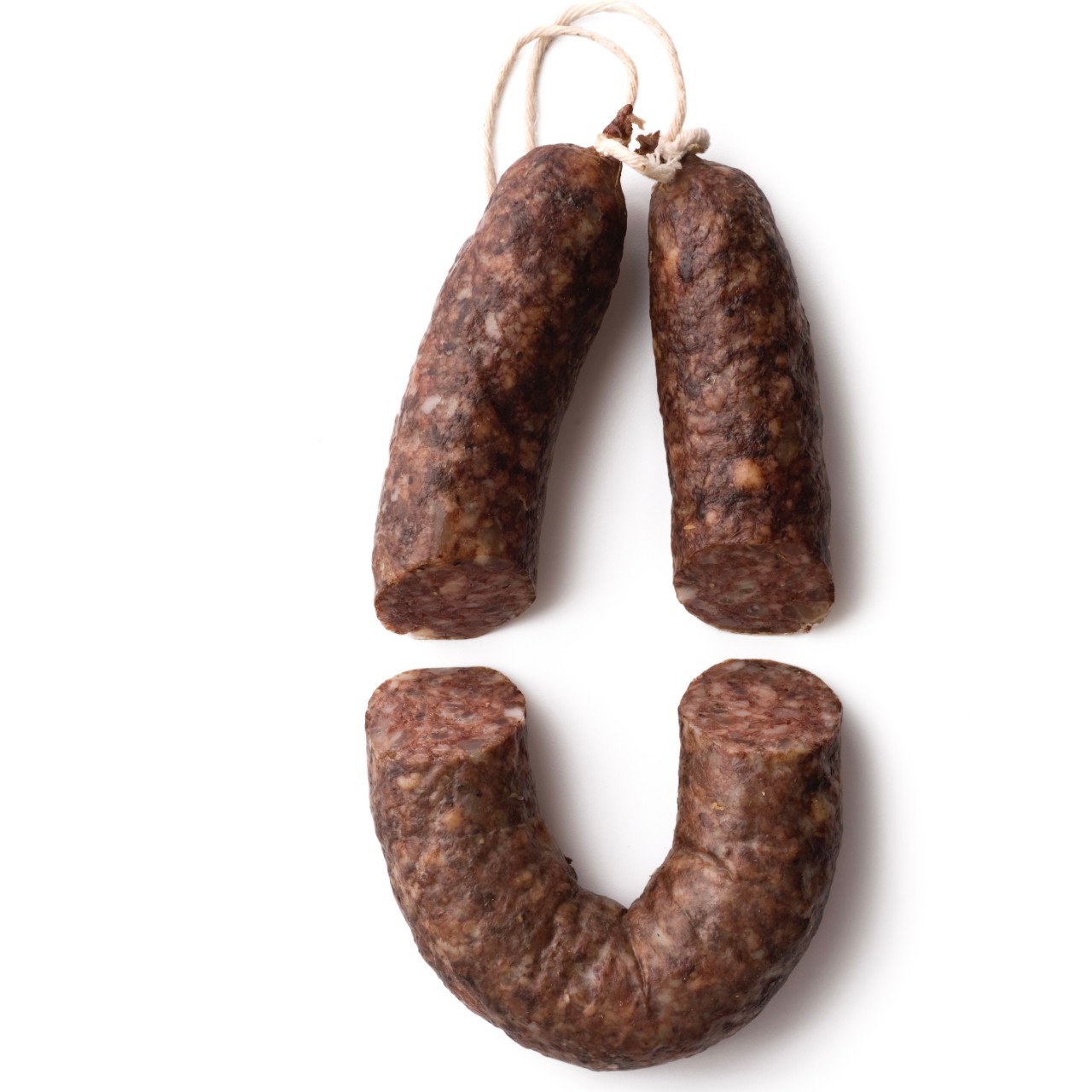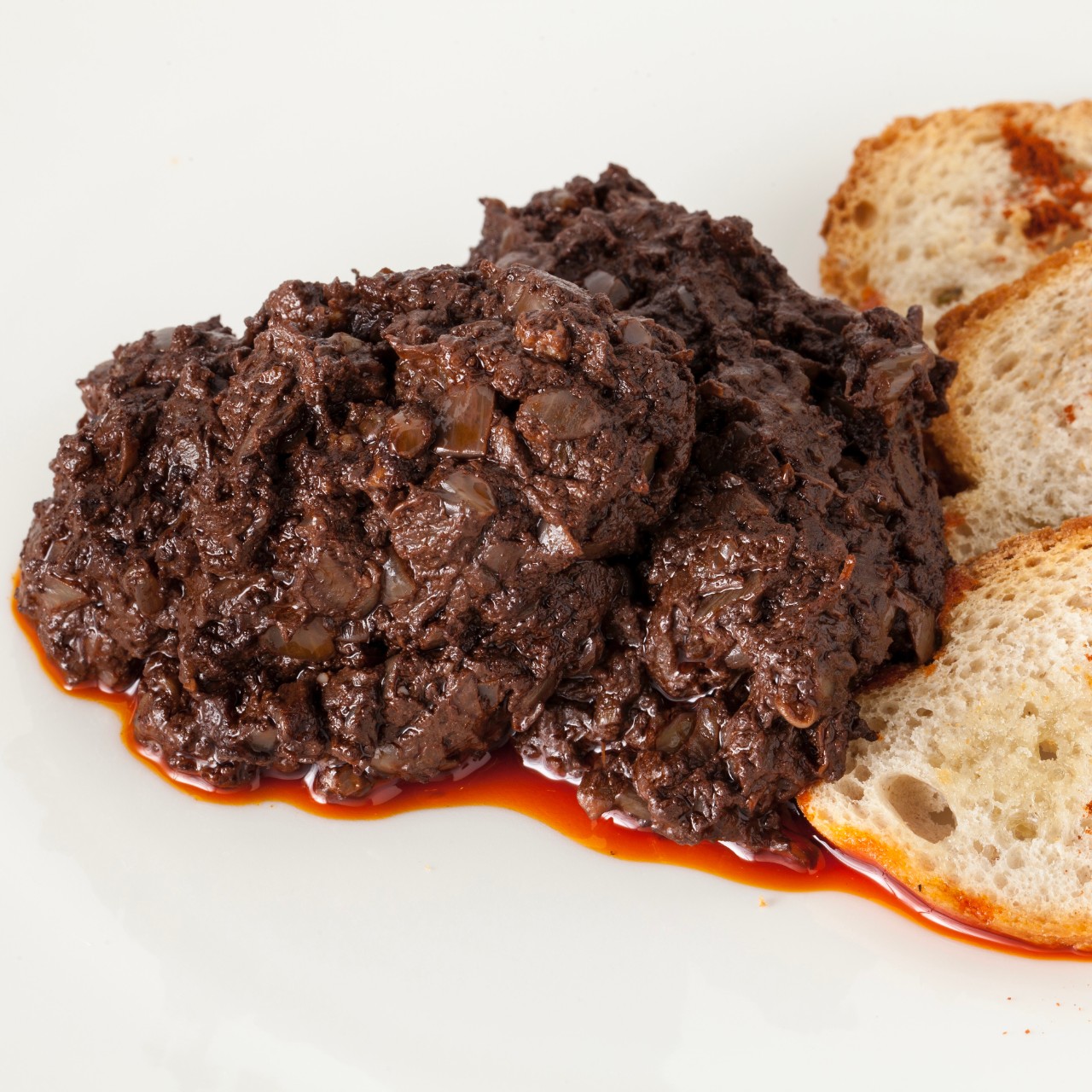.png.transform/rendition-xs/image_image%20(1).png)
Back to Black: Morcilla, the Spanish Sausage That Has Taken the World by Storm
With rice, onion, nuts... this peculiar Spanish product is available can in multiple varieties and can be prepared in various ways
One of the greatest connoisseurs of Spanish products in the UK, Monica Linton (founder of the distributor Brindisa) said, in 2022, just a few days before collecting the Foods & Wines from Spain Award: “It's surprising how good the English are reacting to morcilla. We have about 3 or 4 types of morcilla and we could probably have more and people would still show interest in them," she said.
Linton says it all: Spanish morcilla is a bit of a hit in places like the UK. This may be because it shares some characteristics with British black pudding. Either way, pig's blood plays an essential role in preparing the sausage, which is closely linked to the time of the pig slaughter, although in Spain there are several varieties available, all of them different.

Morcilla de Burgos: with rice and a PGI!
Black pudding from Burgos is also the only one with its own PGI, which was created in 2020. If there's one thing that differentiates this black pudding from the others, it's that rice is used in the recipe. The other ingredients are lard or pork suet, blood, spices, and salt, in addition to the horcal onion, a vegetable rich in fiber and sugar. Currently, 12 producers are covered by the PGI and, in the province, a total of 22 companies prepare black pudding with rice.
Maribel Martín is the manager of the El Revillano sausage factory (Aranda de Duero, Burgos), and is also the president of the PGI. She says that the product's uniqueness has to do with "the province's geographical location, in the middle of trade routes that transported spices and rice to the north of the Peninsula. As a result, this sausage was prepared using not only spices, but also the rice that came from Spain's Levante region." The goal was to prepare a product that was "as complete as possible, and also higher in calories." She also highlights the role of the horcal onion, which brings "quality and softness to the sausage." The first written description of this type of sausage in Spanish cuisine comes from Rupert de Nola, in the Spanish translation of his famous Llibre de Coch, which dates back to 1520.
Martín confirms the success of black pudding from Burgos in the UK. It's traditionally eaten fried or grilled, which mixes the meaty flavor with the light crunchiness of the rice. "However, chefs are becoming increasingly creative with it, including it in croquetas, lasagna, etc. This means that black pudding from Burgos "has a great presence in both traditional and innovative cuisine."

Morcilla throughout Spain
Beyond Burgos, this sausage is available in many different versions all over Spain, including in recipes where the onion replaces the rice. An example are the cold cuts produced in the province of León (Castile-León), where there is a longstanding tradition. One of the companies that exports its products is Palcarsa, which has been producing cold cuts since 1946. Their black pudding "is made with bacon, paprika, onion, and blood," according to Roberto Comegna, from the company's export department.
Morcilla is perfect in stews, "providing the intensity and flavor that many traditional stews deserve." Examples include Asturian fabada and cocido Madrileño. Comegna also points out that it's delicious grilled. In this case, you break the sausage casing and brown the black pudding, which can be served with a simple slice of bread. Little more is needed to make it a delicious snack.

In addition to Castile and León, it's worth noting that black pudding is traditional in other areas of Spain, such as Asturias, where it's smoked, and the Basque Country and Catalonia, where morcilla always includes blood and onion.
Black pudding from Galicia is especially unique as it's made mainly with bread, raisins, water, sugar, pig's blood, lard, pine nuts, and spices. Its flavor is different as it's slightly sweet. Morcilla from Aragón is also surprising, as it's made with pine nuts as well as other nuts, like hazelnuts. Aniseed is also among the ingredients. Another variation, which is a little bit spicy thanks so the pimentón, is morcilla from Alicante, in the Valencia region. There's clearly an immense variety of an increasingly popular product which, following in the footsteps of chorizo, has become incredibly popular all over the world.

